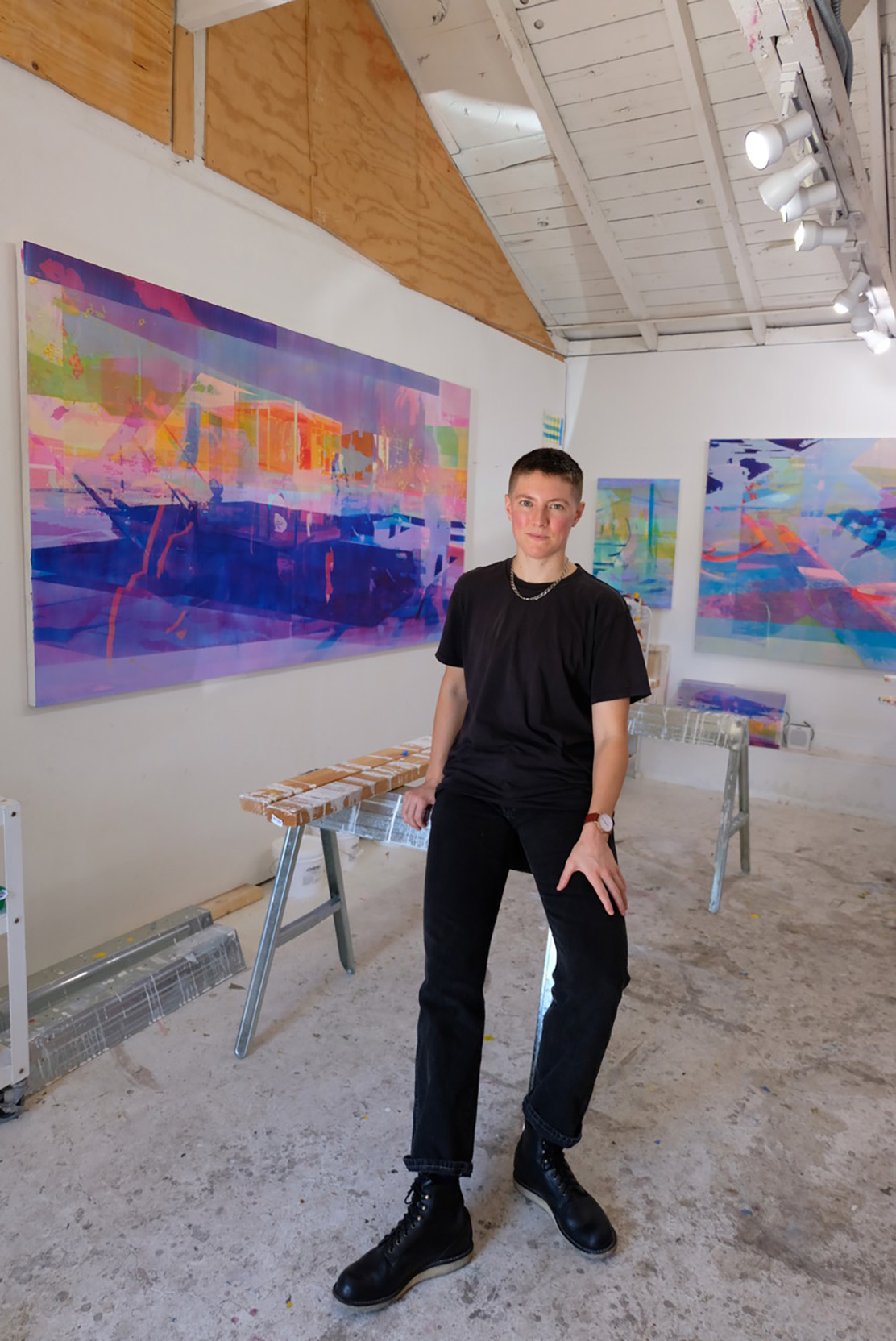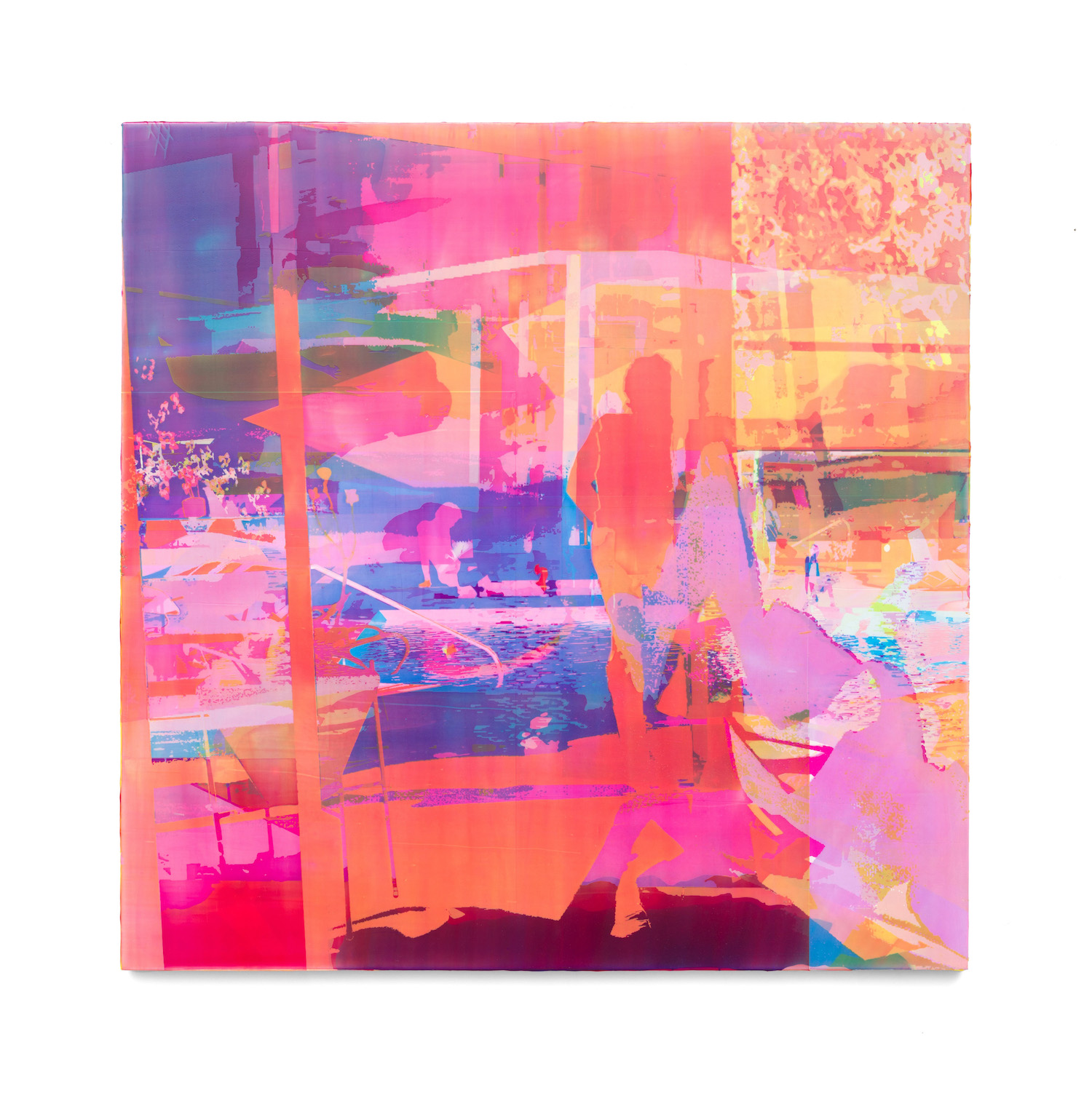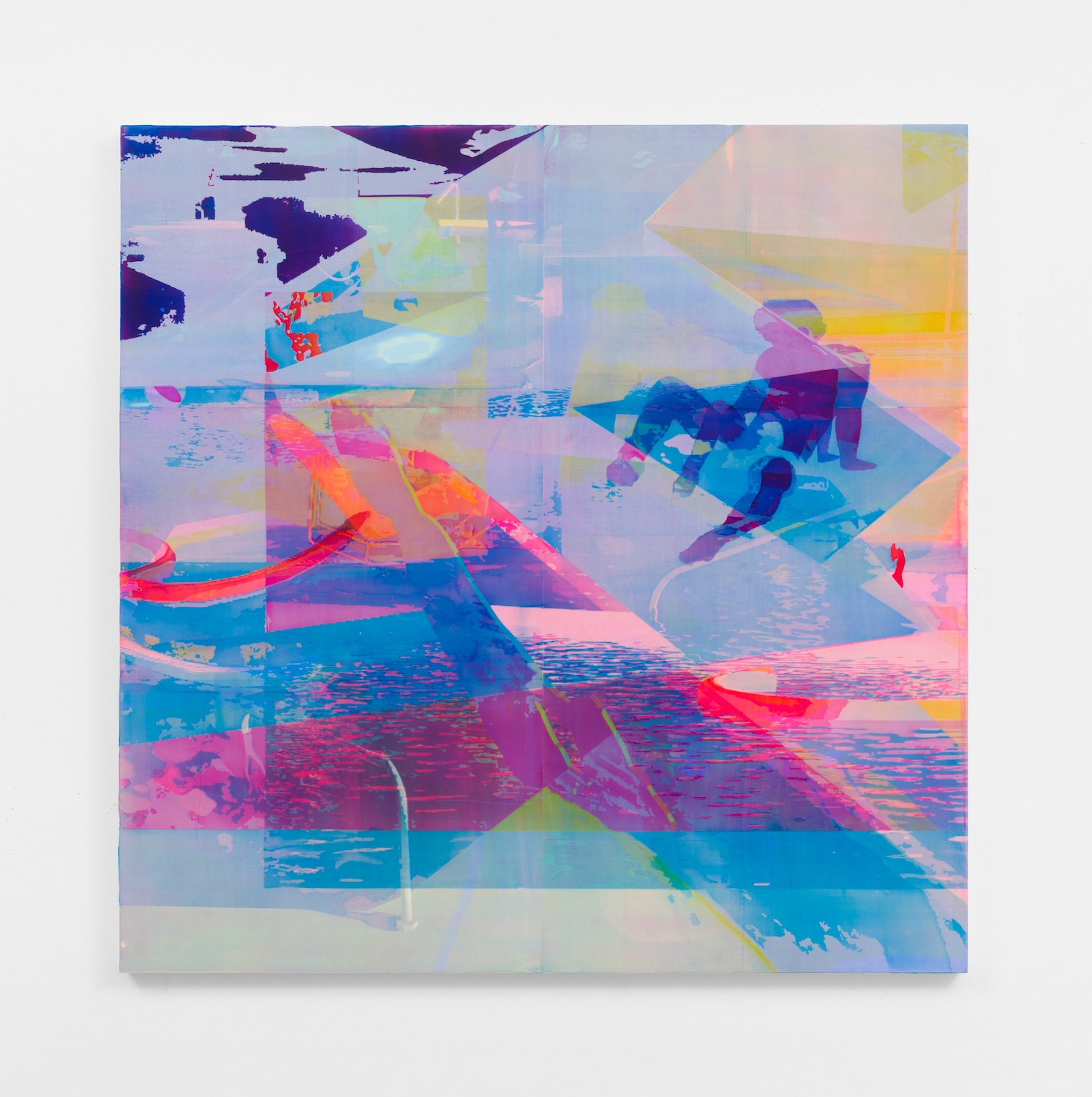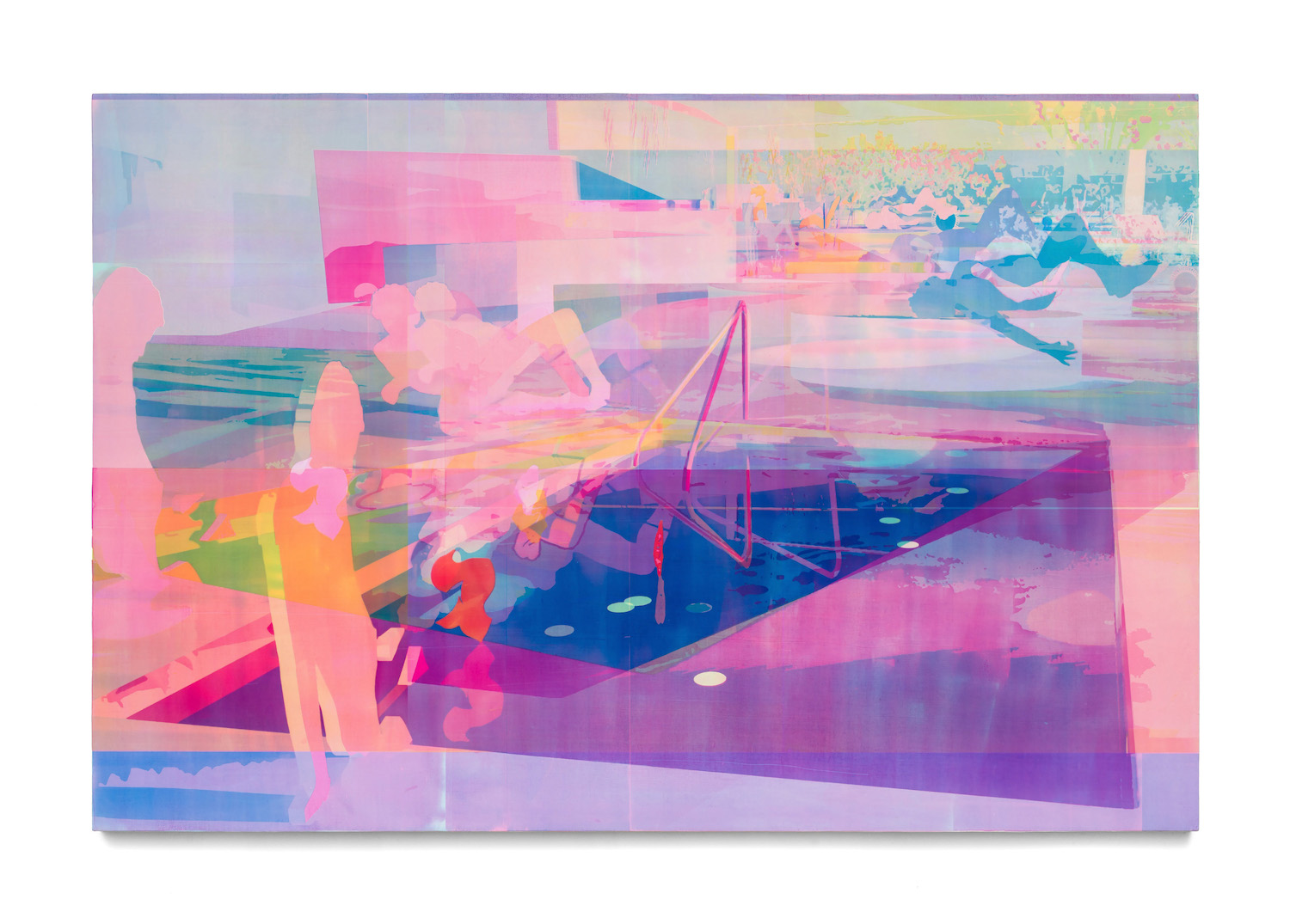Zoe Walsh is a Los Angeles–based painter originally from Washington D.C. They received their BA from Occidental College and Masters from Yale University. Represented by M+B Gallery, Walsh has exhibited their work in group shows around the world. In 2019, they were nominated for the prestigious Emerging Artist Grant from Rema Hort Mann Foundation and were the Al Held Foundation Affiliated Fellow at the American Academy in Rome in 2015. I asked Walsh the following questions to gain a better understanding of their artwork.
ARTILLERY: I know you studied under Linda Bessemer during your time at Occidental College. To me, there is a connection between how each of you experiments with paint. Can you comment on this?
ZOE WALSH: One link between Linda’s practice and my own is that we each construct paintings by stacking discrete layers of paint on top of and adjacent to prior layers, which is an approach that owes a lot to printmaking logic. The gestures of making are distributed through technologies ranging from squeegees to screens and spackle knives. Linda’s playful and rigorous exploration of the plasticity of acrylic paint is a continued source of inspiration.

Walsh in their studio, photo by Isabel Osgood-Roach
In your early work, you incorporated images from Westerns and action films. Now you draw photos mainly from adult films. What contributed to this shift in subject matter?
A common thread from my very early work to my current work is my interest in using spectatorship to talk about dis/identification and desire. While pornographic images are interesting to me because they evoke complicated physical questions, I think the more intentional shift I’ve made is towards using material produced by and for queer people. As a result, I am more emotionally engaged with the complex set of issues that come up over the course of a long project.
A central theme of your work is queer subjectivity. When someone comes across your paintings, how do you hope they interact with them?
I hope that viewers spend time with and get close to my paintings and that each viewer brings their own subjectivity to their experience of my work. I believe that the dialogue that art can generate is transformative. Regarding queerness, it’s so rewarding if my paintings open up space for a viewer to recognize themself in the work.

Zoe Walsh, Knuckles on the equinox, 2021 , acrylic on canvas-wrapped panel , 48 x 48 inches
I am immediately struck by the vibrant colors in your work. You use color in an obscure manner. Can you describe what thought or system goes into choosing colors for a piece?
One of the guiding color principles for my series of pool paintings is to work towards the quality of light that exists during the transitional hours between day and night. Those times when the contours of one’s body and the distances between yourself and another are more difficult to discern. A super-bright passage in a painting might not clarify, but dazzle and disorient.

Zoe Walsh, Lost Stars, 2020, acrylic on canvas-wrapped panel , 48 x 48 inches
How does technology play a role in your practice?
I use digital technology such as Blender, Photoshop and Illustrator to develop compositions and then employ screen printing to print the first layers of each painting. My process entails shuttling back and forth between the analog and the digital as I develop each piece with additive layers of stencilled acrylic glazes. The paintings that emerge from this exchange reveal a hybrid form.


